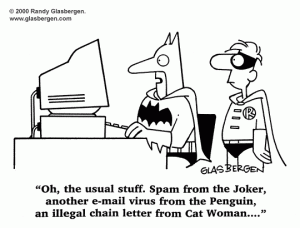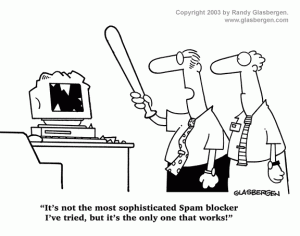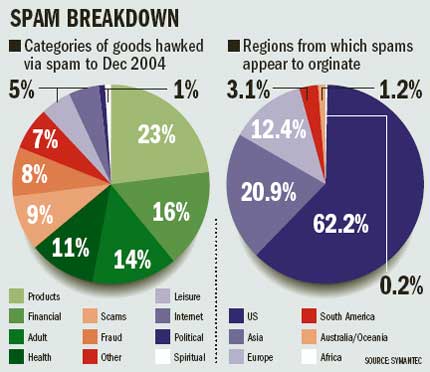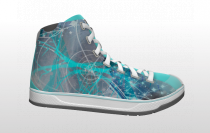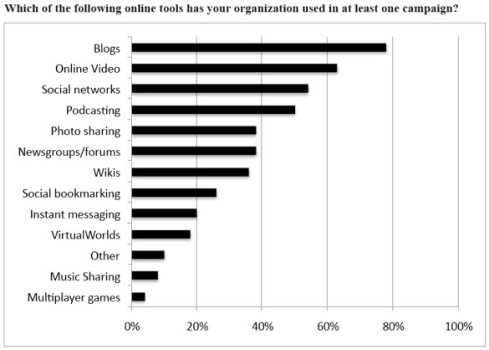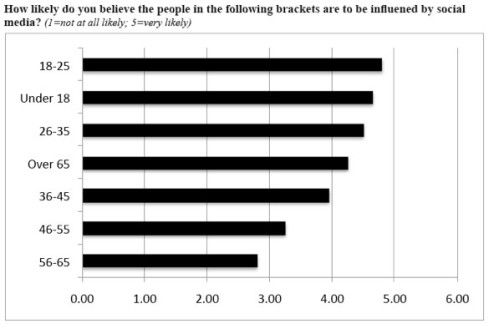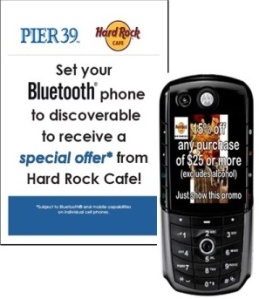Featured Blogs
Since my blog was an experiment in the world of blogging, I found it fitting to go exploring into the world of blogs and see what I could find.
Blogs are like people. They come in different sizes, shapes and colors. They have different ideas much like people. Some are serious, focusing on important matters like politics and the economy. Others are lifelines for people wanting guidance on things like parenting and dating. Some seem more friendly and inviting than others. There are popular blogs and then there are not so popular blogs. Some blogs are fans of companies while others hate companies and want to tell the world about it. There are silent blogs (the ones that haven’t been updated) and noisy blogs (with too many pictures, advertisements and links.) I could go on and on with this analogy.
My most popular blog entry featured links and descriptions of crowdsourcing companies. This time, I’m going to link blogs that I find interesting, unique, fun, and valuable.
- 15 Minute Date Blog – I couldn’t resist starting my list with this blog. It’s written by a variety of people who share tips and tricks related to online dating, according to the blog itself. I found it to be really funny stories about everyday people trying to date in an emerging world. I loved it!
- All Things Myrtle – Since this is one of my favorite vacation spots, I couldn’t resist. This blog is funny and informative. The author resides in the heart of Myrtle Beach and shares stories, news and more about the area. A must read if you’re planning a South Carolina vacation!
- Adventures with Photos – The world of digital photography is growing fast and now is a great time to actually learn how to use your digital camera. This site had photos, tips and tricks related to digital photography. Loved it!
- Beauty Blabber – I gave into the inner gossiper in me and posted this site related to celebrity makeup. Very cute layout – very girlie. It’s eco-conscious and features products that are environmentally friendly. With the Going Green trend, this site is worth a mention
- 4Tunate – I’ve always been a sucker for shows on TLC like Jon and Kate Plus 8, 16 Children and Counting. The idea of having more than one child at a time and then raising them always sucks me in. A mom of quadruplet boys writes this blog. She surely has her hands full. The boys are super cute kids and she’s got some good stories!
- The 9513 – A country music blog out of Texas. Has goodies like gossip, reviews and more. I really enjoyed the interviews with the celebrities. Worth a visit if you like country music!
I think that’s enough blogs to keep you busy for a while. Share your favorite blogs with me by leaving me a comment!
Signing off,
Julie
Holiday Viral Campaigns
Just today, two other viral marketing campaigns found their way into my inbox via a friend who resides in Montana. He’s always sending me funny stuff online, so I had to check them out.
The first is a romantic sleigh ride. A young couple, who appear to be in love, are enjoying a sleigh ride through the woods. They’re bundled up in winter clothing, cuddling close to keep warm. The girl tells her significant other how romantic she thinks the sleigh ride is. Of course, his ego has been boosted and he reveals another level of romanticism. He hands her a lit candle and she smiles. He tells her he has candle light and Bud Light. He reaches to the cooler at his feet and grabs two beers. Then, the horse pulling the sleigh lifts his tail and lets out a hugely powerful cloud of gas which ignites the girl. The guy sits up and asks if she smells barbeque. Of course, she’s torched.
WordPress doesn’t support the file type for the videos. I’d be happy to e-mail this video — Just leave a comment 🙂
Bud Light really tapped into their target market with this advertisement. Anheuser-Busch makes a variety of beers, each targeted toward a specific group of people. For example, their Michelob Ultra is geared towards a more sophisticated drinker, while Bud Light is geared toward college kids. If you visit the websites designated for these beers, you’ll immediately get a visual to accompany my thoughts. As such, this Bud Light advertisement has two young love birds appearing to be in their 20’s. It’s the holiday season, hence the sleigh ride. It even ties into the Budweiser brand as it has horses (and Budweiser is famous for the Clydesdales).
It’s really impressive to see companies like Anheuser-Busch reaching their target market in a medium they are famous for using – the Internet. I would have never seen this if it weren’t for my friend in Montana sending it to me. Plus, it made me want an ice cold Bud Light with my boyfriend. The sleigh ride would be nice, too.
Anheuser-Busch really capitalized on this viral campaign. Perfect timing – perfect medium – easy message – funny – and shareable! Kudos, AB!
The second viral campaign I received featured two identical snow covered cars. A man walks outside with a briefcase, exerting a lot of effort to clean off his vehicle. He even scrapes the side mirrors! After an extensive clearing, he clicks the button on his remote entry to unlock his car. The viewer can then see that he cleaned off the wrong car – his was parked in front of the one he cleaned off. It then mentions a coffee offer.
Again, I’d love to share this video, but WordPress doesn’t support the file type. Feel free to leave a comment and ask for this video, too!
These were both successful viral campaigns because they were circulating in their target audiences in a timely manner. I wouldn’t have shared either of these with you if it weren’t the holiday season. They simply wouldn’t have been relevant.
These viral campaigns remind me of Super Bowl commercials. I can’t wait to see what the major corporations will come up with for this year’s Super Bowl. I’m sure at least one company will use some sort of viral campaign with their million-dollar advertisements. Any predictions as to who might? Let me know!
Signing off,
Julie
BK Flame – A Viral Infection?
My apologies for the lack of updates – it’s the holiday season and I’ve been running around trying to get shopping, baking, cooking and wrapping all finished. As a result, my blog has been set on low on the back burner 😉
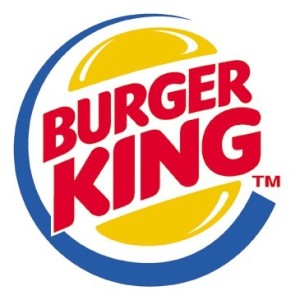
Have it your way.. with BK Flame?
Last week, I encountered a viral marketing campaign that truly made me laugh out loud. It perfectly ties together both of the IMC classes I’m almost finished with this term – Brand Equity Management and New Media & the Market.
According to a local Froggy radio DJ, Burger King is selling a new cologne for men called Flame. The scent is described as, “Body spray of seduction, with a hint of flame-broiled meat” (http://www.firemeetsdesire.com, 2008).
After I almost wrecked my car from laughing too hard about this creation, I knew I had to investigate further. Well, it wasn’t a joke like I initially thought. The website for the scent is http://www.firemeetsdesire.com/.
Upon exploring the site, I’m now convinced that I will have nightmares for the rest of my life of the Burger King mascot, the King. Let me explain… I clicked on the website and several scenes were depicted to go along with the tag line – “Set the mood no matter what mood you’re in.” One scene was a luxurious bubble bath; another was a blanket of beautiful red roses I could almost smell. There was a champagne glass being filled with bubbly, too. Then, I pressed my luck too far. The next scene was the Burger King, almost naked. He had a blanket cover his nether regions, and seductively uses his finger to motion “come here.”
I immediately called my closest friends and shared this website with them. They couldn’t get enough of it. I e-mailed some other friends, urging them to share the message, as I couldn’t believe it was real. What a creative viral campaign!
Viral campaigns can be great for companies wanting to garner attention and sell products. I found some simple rules to create a successful viral marketing campaign. They came from another blog who cited Jennifer Laycock of Search Engine Guide.
1. Thou Shalt Know Thy Costumer – in order to successfully market to the correct customers, you need to know a bit about those customers. Listen to their feedback and get involved in their online communities. This first hand knowledge will really come in handy when creating strategic messaging
2. Thou Shalt Be Remarkable – You must be different to get attention in this world. Creating the same old “me too” campaigns wont get nearly as much coverage and buzz as being the first to do something great. An amazing message should translate into an amazing company.
3. Though Shalt Try, Try Again – You can’t know what is going to happen with a campaign idea until you have initiated it and tested it out. Not all campaigns will be come viral. But with each new campaign you learn more about the process, more about the messaging and more about the consumer so the next time, you’ll get it right.
This BK Flame website and buzz ties into the other IMC class I’m taking as it’s an interesting brand extension. Many brands have launched unsuccessful extensions which could cause damage to brand equity. Some examples are Cosmopolitan (the magazine) yogurt and dairy products, Harley Davidson cake decorating kits, and Everlast cologne. The discussion about the effect of the BK Flame scent on brand equity is a completely different topic for another day. Only the future can tell what this will do for the fast food giant.
Signing off,
Julie
References:
Larson, Dana. (2008 August 18). SES San Jose: Igniting Viral Campaigns. Retrieved on December 22, 2008 from http://www.toprankblog.com/2008/08/ses-san-jose-igniting-viral-campaigns/
FlameMeetsDesire.com
A Whole New World
A few short weeks ago, I was asked to rank the effectiveness of new media in marketing. One of the least effective ways, I thought, was mobile marketing. Yes, it has the alliteration working for it, but I thought that was the end. However, in the time that has passed since, I have started to view mobile marketing in a much better light.
Mobile marketing is the first completely new marketing vehicles to hit the scene in over 50 years (Ramos, 2008). This information made me reconsider my thoughts about mobile marketing. I mean – if marketers are using it, it has to have some merit, right?
Well, yes. But before I delve into that, a little background information is necessary.
I’ve mentioned before that Generation Y is hard to reach, but it seems that is

Youngsters are using cell phones very early in life!
because marketers don’t know how to reach them. Teens have not just adopted new technology… they have internalized it (Montgomery, et al., 2004). For 78% of Gen Y, cell phones are the most popular methods of remote communication (Event Marketing Institute, 2008).
Cell phone usage even spans younger children. Approximately 35% of U.S. “tweens” (kids between the ages of 8 & 12), own a mobile phone. Five percent access the Internet on their phones each month, according to a December 2007 Neilsen Company study. Tweens are using their phones for more than just the Internet; The study also found that 20% of tweens have used text messaging, while 21% have used ringtones or ringback tones. Of the 5% of tweens who use their phones to access the Internet, 41% said they did so while commuting or traveling, while 56% did so at home. At home was also where the majority of tweens said they downloaded or watched TV on their phones (58%) or downloaded or played music on their phones (64%) (Neilsen Study, 2007).
With this information, it’s no wonder why marketers are embracing mobile marketing tactics. There are a variety of mobile marketing options.
M2M (Mobile to Mobile)

Part of American Idol's campaign
This is when marketers use mobile-based advertising to boost sales of mobile ring tones, wallpapers, games, and videos. Usually, it’s just part of a campaign, but could stand alone. It has an exceptionally high click-through-rate of over 50%.
One of the best examples of this is with American Idol and Cingular Wireless. Cingular customers had access to text chats with contestants, voting reminders, a fan club, trivia, and ring tones.
Mobile Games

Transformers Mobile Game
These are games that incorporate products as the stars of a game. Users download the games to their phones, often for fees of about $3.99 – $5.99 per game. Mobile games give marketers the opportunity to “blend the brand into entertainment experience, with rich graphics, color, and action,” described Craig Holland, former president of Thumbworks (a mobile game making company (Ramos, 2008).
BlueTooth Marketing

One Company Using BlueTooth Marketing
This is probably the newest form of mobile marketing. It uses BlueTooth technology to do tings like send advertisements or coupons. Because it’s still new, there are a lot of glitches that need to be worked out. However, it wasn’t too long ago that the same thing was said about websites. BlueTooth marketing isn’t limited to just cell phones, either. Messages can be sent to BlueTooth enabled laptops and PDA’s, too!
It’s truly impressive how innovative marketers are getting in terms of reaching the youngest generation. Since we’re (myself included) almost trained to tune out traditional media, it’s absolutely necessary to embrace new ways of marketing. Otherwise, a company runs the risk of being viewed as for adults only or not interested in our purchases.
Although not exactly mainstream now, mobile marketing will eventually be as much a part of our lives as radio advertisements and television commercials.
——-
Event Marketing Institute (2008 June 2). Event Marketing Institute Unveils New Findings on Marketing to Gen Y; New Study Highlights the Best Ways to Reach an Elusive Group That Spends More Time Texting Than Talking. Marketwire.com. Retrieved on December 15, 2008 from http://www.marketwire.com/press-release/Red-7-Media-863492.html
Montgomery, K., Gottlieb-Robles, B. and Larson, G. (2004 March). Youth as E-Citizens: Engaging the Digital Generation. Center for Social Media. Retrieved on December 15, 2008 from http://www.centerforsocialmedia.org/ecitizens/youthreport.pdf
Neilsen Study. (2007 December 03). Most Tweens Accessing TV, Music & Internet on their Phones, Do So at Home. PR NewsWire. Retrieved on December 15, 2008 from http://www.prnewswire.com/cgi-bin/stories.pl?ACCT=104&STORY=/www/story/12-03-2007/0004715443&EDATE=
Ramos, James. (2008 August 18). Lesson 5: Can You Hear Me Now? M2M, Advergaming, In-game Branding & RSS feeds. Retrieved on December 14, 2008 from https://ecampus.wvu.edu/webct/urw/lc5116001.tp0/cobaltMainFrame.dowebct
Growing up Wired
Marketing to Generation Y is hard, to say the least. They’re fickle with their tastes and have grown up wired. According to a Kaiser Family Foundation study, 96% of all children ages 8 – 18 have been online at least once (Ramos, 2008).

This youngster is getting an early start using a computer.
Generation Y is estimated to total 60 million people, which is more than three times the size of Generation X (Business Week, 1999). It’s no wonder, then, why marketers have been pulling out all the stops in an attempt to market to this generation of people who have yet to define themselves.
One company is trying something different. Procter & Gamble has created Tremor, a work of mouth marketing unit geared towards children. Tremor recruits teenagers through online advertisements to participate in direct marketing programs. The reason Tremor has been so successful? Picking the right candidates. Tremor’s ideal candidates are the “connected, influential trend-spreading kind” (Walker, 2004). Usually, between 10 and 15 percent of applicants are chosen for the program.
When I was in high school, I participated in the Tremor program. I didn’t really realize what it was at first, but I knew that I got to receive (for free) cool stuff before anyone else and some company wanted to know my opinion about the stuff. For example, I can remember receiving a DVD with a few episodes of this show about some people stuck on an island. I was immediately interested in it. Turns out, it was the pilot episodes of the huge televisions show Lost.

Little did I know, I was helping launch a hugely successful television show.
I also received things like lip gloss, facial scrubs and makeup. Some of the things I liked; others weren’t any good.
I can remember thinking I was really special because some company wanted to know what I thought about new products and ideas. Of course, I told all of my friends about the cool stuff I was getting. Sometimes, I got enough samples to share with them. Since I’ve always been super-opinionated, I couldn’t get enough of this program. I don’t remember how I ended up getting involved or how my membership ended, but I knew I was a part of something cool.
Now, as I study marketing as a graduate student, I can’t believe that I was a part of such a successful program. I didn’t realize what my opinion was worth because I belong to Generation Y.
So, why is this program so successful? Well, it taps into teens at a time when they’re desperate to tell people things and be cool. When you’re on the inside, you have the upper hand. Plus, it uses word of mouth to create buzz.
Check out these statistics:
- Consumers say that word of mouth is still the number one influencer in their apparel (34.3%) and electronics (44.4%) purchases (Retail Advertising and Marketing Association/BIGresearch Study, November 2008)
- Recommendations from family and friends trump all other consumer touchpoints when it comes to influencing purchases, according to new data from Publicis media network ZenithOptimedia. (AdAge, April, 2008)
- According to a global Nielsen survey of 26,486 Internet users in 47 markets, consumer recommendations are the most credible form of advertising among 78% of the study’s respondents. (Nielsen, “Word-of-Mouth the Most Powerful Selling Tool”)
- Most word of mouth is positive. Across all of Bazaarvoice US clients, 80% of product ratings are 4 or 5 stars out of 5. Across all of Bazaarvoice UK clients, 88% of product ratings are 4 or 5 stars out of 5. (“J Curve,” Bazaarvoice and Keller Fay)
- Online social network users were three times more likely to trust their peers’ opinions over advertising when making purchase decisions. (“Social Networking Sites: Defining Advertising Opportunities in a Competitive Landscape,” JupiterResearch, March 2007)
- Consumers trust friends above experts when it comes to product recommendations (65% trust friends, 27% trust experts, 8% trust celebrities). (Yankelovich)
- 91% of moms prefer brands that other moms have recommended. (Marketing VOX, October 2006)
- 86.9% of respondents said they would trust a friend’s recommendation over a review by a critic, while 83.8% said they would trust user reviews over a critic. (Marketing Sherpa, July 2007)
It’s no wonder marketers are embracing this technique to generate sales. The numbers speak for themselves.
What do you think?
——–
BazaarVoice. (2008). Online Marketing Statistics: Consumer Shopping, Purchasing and Word of Mouth. Retrieved on December 11, 2008 from http://www.bazaarvoice.com/industryStats.html
Business Week Online. (1999 February 15). Generation Y Today’s teens–the biggest bulge since the boomers–may force marketers to toss their old tricks. Retrieved on December 11, 2008 from http://www.businessweek.com/1999/99_07/b3616001.htm
Ramos, James (August 18, 2008) Lesson 7: The Young and the REST but not LESS: Targeting Youth and Multicultural Audiences with Emerging Media. Retrieved on December 3, 2008 from https://ecampus.wvu.edu/webct/urw/lc5116001.tp0/cobaltMainFrame.dowebct.
Walker, Rob. (2004 December 5). The Hidden (In Plain Sight) Persuaders. The New York Times, 69.
Sex, Drugs & Rock and Roll
I checked my America Online inbox today to discover that I had 140 new messages since in a week.
Naturally, I was excited to see who wanted to catch up, what was happening with friends, or what jokes my family had sent.
Of the 140 new messages, 136 of them were SPAM. I had offers for male genital enhancements, jewelry specials, club memberships, clothing sales, and political propaganda. There were offers for diapers, disinfectant wipes, and candles. How many did I open and read? ZERO.
I’m not alone in this situation. Spam represents 60% of all Internet e-mail, representing over 76 billion messages that require nearly 10 petabytes of storage (Sipior, Ward and Bonner, 2004).
So, why do companies send out mass e-mails?
Well, it’s cheap. Spam over the Internet can be sent essentially for free (Dettmer, 2003). But, other people end up paying for spam. For example, if you pay as you go with Internet access, you’re paying to look at the spam in your mailbox. If you check your mail at work, your employer is paying for it.
What can be done about receiving spam e-mail?
Don’t share your e-mail address
This won’t guarantee you won’t receive spam, but it will cut down on it.
Install Spam blockers
You run the risk of blocking messages from friends and family with this option, but it’s worth a shot. You can block keywords or e-mail addresses, depending on what type of blocker you install.
Delete it
This is the most popular method of cleaning out inboxes that have been polluted with spam. Select all messages then click on delete… They’re gone!
What techniques do you use to get rid of spam? Do you have ideas to reduce the amount of messages in your inbox that are spam related? Let me know!
Signing off,
Julie
————–
Sipior, J., Ward, B., & Bonner, P. (July 2004). Should Spam Be on the Menu? Communications of the Association for Computing Machinery, 47.
Dettmer, Roger. (September 2003). WHAM, Bam – You’ve Got Spam and you aren’t going to like it. IEE Review.
Spam Breakdown. Retrieved on November 17, 2008 from http://www.smh.com.au/news/Next/Spam-busters-new-weapon-the-honey-trap/2005/02/21/1108834695960.html
Mailing list graphic: www.silverhairs.co.uk/help24a.htm
Batman graphic: spamlinks.net/humor.htm
Spam blocker graphic: http://ditio.net/tag/spam/
Crowdsourcing Companies
Week three of class brought us to the idea of crowdsourcing as a way to generate buzz. I found this idea to be really interesting. Jeff Howe of WIRED Magazine defined crowdsourcing as “the act of a company or institution taking a function once performed by employees and outsourcing it to an undefined (and generally large) network of people in the form of an open call.”
I thought it would be neat to create a top five list of interesting companies that are utilizing crowdsourcing.
- This company takes designs submitted by users and creates rockin’ tee shirts from them. Who doesn’t love a great tee shirt? Plus, the prices are really reasonable. I saw tee shirts as low as $9 being showcased on the main page. The winning design gets printed and the artist gets cash & prizes. Sounds like a winner to me!
- This company isn’t just about fashion; it’s about a new way of thinking that includes getting input and forming a partnership with their customers.RYZ Wear was founded by ex-industry sneaker people who found a better way – instead of dictating from the top down, RYZ wear dares anyone to design the perfect pair of shoes.The winning designers will get cash for their work, too!
- I think that this encyclopedia should be nominated as a top crowdsourcing company.Wikipedia is written by volunteers from around the world and anyone can edit it. The online encyclopedia was created in 2001 and quickly grew into one of the largest reference websites.While people don’t get paid to edit the pages, it’s still outsourced work over the Internet.
- This company takes user submitted designs and allows anyone to instantly create an array of products online. The products on Zazzle are made one by one, as soon as the user clicks on purchase now. Products are produced within 24 hours. Sounds pretty cool!
- This crowdsourcing company gets double the points.First, its tagline is the home of crowdsourcing, and it’s exactly that.Take a look at all the crowdsourcing companies trying to make it.I found some really neat ones… from a customizable gift card company to a company that helps make wishes come true! Cambrian House is crowdsurfing for crowdsurfing companies. Pretty brilliant!
Do you know about any crowdsourcing companies that I didn’t mention? Share them. They’re popping up on the Web every day, so I’m sure there will be even more cool crowdsourcing companies tomorrow. Have you purchased anything from a crowdsourcing company? What was your experience like? How did it compare to purchasing from a regular retailer?
* Julie*
The Benefits of a Website for your business
In the second week of class, utilizing the web for advertising was the central topic of discussion. I was especially interested in this as my mom owns three businesses and she is in the process of making websites for each of them.
One of my mom’s businesses is a gift shop called Just Right Gifts. She started the company from her hobby of creating crafts for our house. She sells a wide variety of items that make perfect gifts, including crocheted baby outfits, candles, sports paraphernalia, soaps, holiday decorations, and other crafts.
The other is a home health care business. She has a variety of services she offers for people needing assistance at home. Although the majority of her clients are elderly, she offers services for new mothers and patients recovering from surgery. This business is called Just Right Homecare.
Finally, my mom is a certified wedding planner. She recently completed a program through the International Institute of Weddings. I can remember mom planning weddings since I was a little girl. Now, it’s official. She’s committed to helping create the most memorable weddings on anyone’s budget.
There are endless benefits to having a business website; I’ve listed some of the most popular below.
- Website offer cheaper and more flexible advertising options
With the unlimited space on the Internet, space is inexpensive. Your advertisement (website) can be accessible 24 hours a day, 7 days a week and content can be updated as frequently as necessary. Plus, Internet usage is huge. Millions of people have access to the Internet. According to Net Access Communication Systems, 45 million people used the World Wide Web in the three months before a survey in the United States and Canada.
- Websites break through barriers
Websites break through geographical barriers. They’re accessible from just about every region of the world by any person with Internet access. They don’t open at a specific time or ever close.
- Websites diversify revenue streams
A website is a form of media where anyone can acquire information. This media can be sold as advertising space to other businesses. Some businesses even feature a directory of complimentary services where users can search for information about businesses that will enhance the product or services sold by your business. My mom is a wedding planner and may list catering companies, floral companies, disc jockeys, and travel agents that she frequently works with on her directory listing. The listings are sold to other companies as a way to generate revenue.
- Websites offer convenience
It’s so much easier for a person to look up information on the Internet for a product or service that they need rather than to get in the car, drive somewhere and look for it. Also, the potential customer can visit the website any time he or she pleases.
- Websites add value and satisfaction
With the convenience and individualized customer service, you’re adding value to your offering and your customer experience climbs to a new level. Plus, it’s easy to add content that will entertain your “guests.” You can do this by featuring tips, advice or general interest content. These things help customers remember websites and companies!
- Websites improve credibility
A website allows companies to communicate what they are about and why you should trust them. Lots of people use the Internet for pre-purchase information so that can determine if a particular company is offering incredible deals or trying to rip them off. Websites also allow for viral marketing. When visitors arrive at your website and have a positive experience, they’re going to tell their friends. Then, their friends will visit.
- Websites allow affordable market research
Websites often have features like visitor polls, online surveys, or other ways for customers to provide feedback. You can track the statistics related to how many hits you have had on your website, too.
Well, there you have it — some of the basic benefits of a website. Now, before you create your own, interact with me!
- What benefits have you experienced since launching a website?
- What are the downfalls of creating a company website?
- What companies have created successful websites?
- Why do you think they’re successful?
- What companies haven’t done such a great job with their websites?
- What don’t you like about them?
Signing off,
* Julie *
References:
- Eiledon Solutions. (2005 June 14). Benefits of Having a Website. Retrieved on November 9, 2008 from http://www.eiledon.co.za/webmarketing12-benefits-of-having-a-website.htm
- Global Nexchange Solutions. (2004). Website Benefits. Retrieved on November 9, 2008 from http://globalnexchange.com/web-design/website-benefits.htm
Ads and Groups and Profiles – OH MY!
Throughout my exploration of new media, I can’t help but notice the growing presence of marketing on social networking sites. I love using Facebook and MySpace to keep in touch with friends and family. I never would have been the one to think that social networking websites like I mentioned would be the arena for marketing in this digital age.
Social networking websites have made a change in terms of a marketing professional trying to determine the best mix for an integrated marketing campaign. Before the digital age, there were very few options for marketers from which to choose. Generally, only innovative companies with a huge marketing budget were able to jump into this new ocean of opportunities. However, marketing online has become the hottest way to promote companies and products. The playing field is now (almost) level.
How can you decide which social network to use for your banner or display ads? There are a variety of different social networks to choose from; some of the most popular are MySpace, Facebook, and Bebo, but that does by any means include all of the options. There are social networks for athletes, bloggers, artists, photographers, mothers, investors, and just about any other way to identify people by their interests.
There are three popular ways to embrace social networking websites as a marketing tool.
Banner or Display Ads
These aren’t new to social networking websites as we’ve all seen them on just about every website we visit. They’re those pesky ads at the top, bottom or sides or a website encouraging you to visit another site.
Marketers are taking a variety of approaches in choosing the best social networks to advertise with. They’re asking questions like:
- Where does my target audience visit?
- Where are my competitors advertising?
- Does it make sense to advertise on this network based on my products?
Measurement of banner or display ads isn’t a fine science, yet. There have been a variety of ways in the past that have attempted to successfully measure the effectiveness of a banner or display ad. All of them have had faults, but each time a new way of calculating this is derived, it seems to get closer to measuring what marketers want to know. Right now, marketers have moved toward a post impression analysis. This trumps past methods of measurement because it looks at the conversions of people viewing the advertisement and then visiting the website within a time period.
Groups
Many companies have taken the route of creating groups and networks that users can join on social networking sites. Groups are almost like miniature social networking sites. On one hand, the creation of groups is barefaced advertising. On the other hand, it’s another way for companies to connect with their target audience and maybe even narrow their target audience into several niche audiences.
For example, a publishing company could have networks for writers, and individual groups for fans of different kinds of books they publish. This is viral marketing at its core and can be especially successful if companies can be innovative enough with their groups to get large numbers of people to join!
Groups need to be updated regularly with company information, offers for members of the group, and maybe tips or tricks associated with the group. This will keep users returning to the website and continuing their membership to your group!
It’s hard to determine a specific way to measure how effective groups are. But, apparently they are working for some companies because I’m always getting invited to join groups for a variety of companies.
Profiles
Some companies are swinging for the fences by creating profiles for their products or services on social networking websites. These profiles are not necessarily about selling things, but sharing knowledge with the target audience. Information can be shared instantaneously through profiles. A person associated with a profile can add a personal touch. Profiles can be a forum for “word of mouth” advertising on the World Wide Web. Profiles can also be an arena for answering questions about the company, service or product.
In order for profiles to be successful, they must be updated regularly so that the target audience wants to visit the profile on multiple occasions.
Measurement of the effectiveness of profiles is still in its infancy stage. I couldn’t find a lot of information about what the current practices are for measuring profiles’ effectiveness, but I would surely bet money on someone working on developing a way to measure profiles!
Findings with New Media
A report by the Society for New Communications Research (SNCR) issued a report about new media. In the report, I found some key results that tied into my post.
First, the most popular social media marketing tools were evaluated. I thought it was important to point out that 56% of marketers have used social networks.
In terms of effectiveness, social networks slip into fourth places, but this is perceived effectiveness as it is difficult or impossible (right now) to measure effectiveness in new media.
Finally, some demographic information should be reviewed. I was surprised to see the effectiveness did not necessarily decrease as age increased. Take a look at where the “over 65” divisions falls!
Well, I hope that you’ve found some of this to be interesting!
– Julie
References:
Gillin, Paul. (2008 April 1). Social Media Marketing Still Lacks Strong Metrics.
Journal of New Communications Research, Vol. II. Retrieved on November 2, 2008 from http://www.marketingvox.com/social-media-marketing-still-lacks-strong-metrics-037724/
Mosher, Barb. (2007 October 11). Social Networks as Marketing Tools: Advertising on Websites like Facebook or Myspace for Online Markets. Suite 101. Retrieved on November 2, 2008 from http://website-marketing.suite101.com/article/cfm/social_networks.
Marketing in the 21st Century
The first week of discussion helped me make the leap into the 21st century. I had to choose the most and least effective form of new media based on a list provided to me. When I saw this list, I had no clue how some of these new media could be used for marketing. To clarify, I’ll share the list.
1. Websites
2. Video ads
3. Widgets
4. RSS feeds
5. Podcasting
6. Banner ads
7. Short films
8. Blogs
9. Chat rooms
10. Blue tooth
11. In-game advertising
12. Social networking
My vote went to websites as the most effective new medium. My primary reason for choosing websites is that they are the most flexible media on the list. With websites, it is easy to include video ads, widgets, RSS feeds, podcasts, banner ads, short films, blogs, chat rooms, and social networking. Assigned reading from week one also supports this.
“When a consumer visits a websites, many cycles of messages can be exchanged in a short time. When the consumer visits some time later, the dialogue can resume just where it left off. The web medium is as subtle, as flexible, as pertinent, and as persuasive as one-on-one dialogue. It boasts a better memory than the most diligent salesperson and has none of the salesperson’s distaste for repetitive tasks. Although other media may be more gripping, the Web is uniquely responsive” (Deighton, 1996).
In order to choose a least effective medium, I had to do some research. I had no idea what a widget was or how podcasting or Bluetooth could be used as marketing tools. A widget has the potential to be a powerful marketing tool for a very niche audience. If companies can tie their products or services to something their target audience desires, a widget could be successful. For example, a good widget for Pampered Chef or Betty Crocker would provide users with different recipes featuring their products. This widget would encourage users to buy products from the widget’s brand and keep the brand name at the top of the user’s mind.
The most interesting new medium to me is BlueTooth. In the class discussion, I chose this at the least effective, primarily because it reminded me of telemarketing and has very little reach. However, as technology advances, BlueTooth has a great opportunity to be a very focused medium for companies to embrace. Right now, BlueTooth Proximity Marketing (BPM) is popular overseas in European locations.
Here’s how it works: a company sets up a “hot spot” where their target market will visit. The target market must have a BlueTooth enabled phone in “discoverable mode.” Then, the consumer will be able to receive messages for free over the BlueTooth connection.
An example of this could be a company like Nike setting up “hot spots” near tennis shoe retailers in the mall. Consumers receiving the BlueTooth marketing may receive a coupon on their phone for 10% off the next shoe purchase. The best way to think of BPM is as a virtual billboard or flyer advertisement. Right now, this technology is in its infancy stage, but there is a world of opportunity out there.
My Professor asked in the discussion if anyone had changed their minds from their original choices for most and least effective. Technically, I still feel that BlueTooth marketing needs to be further developed, but once it matures, I wouldn’t feel that it was the least effective. I still feel that websites are the most effective new media.
References:
Deighton, John. (November – December 1996). The Future of Interactive Marketing. Harvard Business Review.
